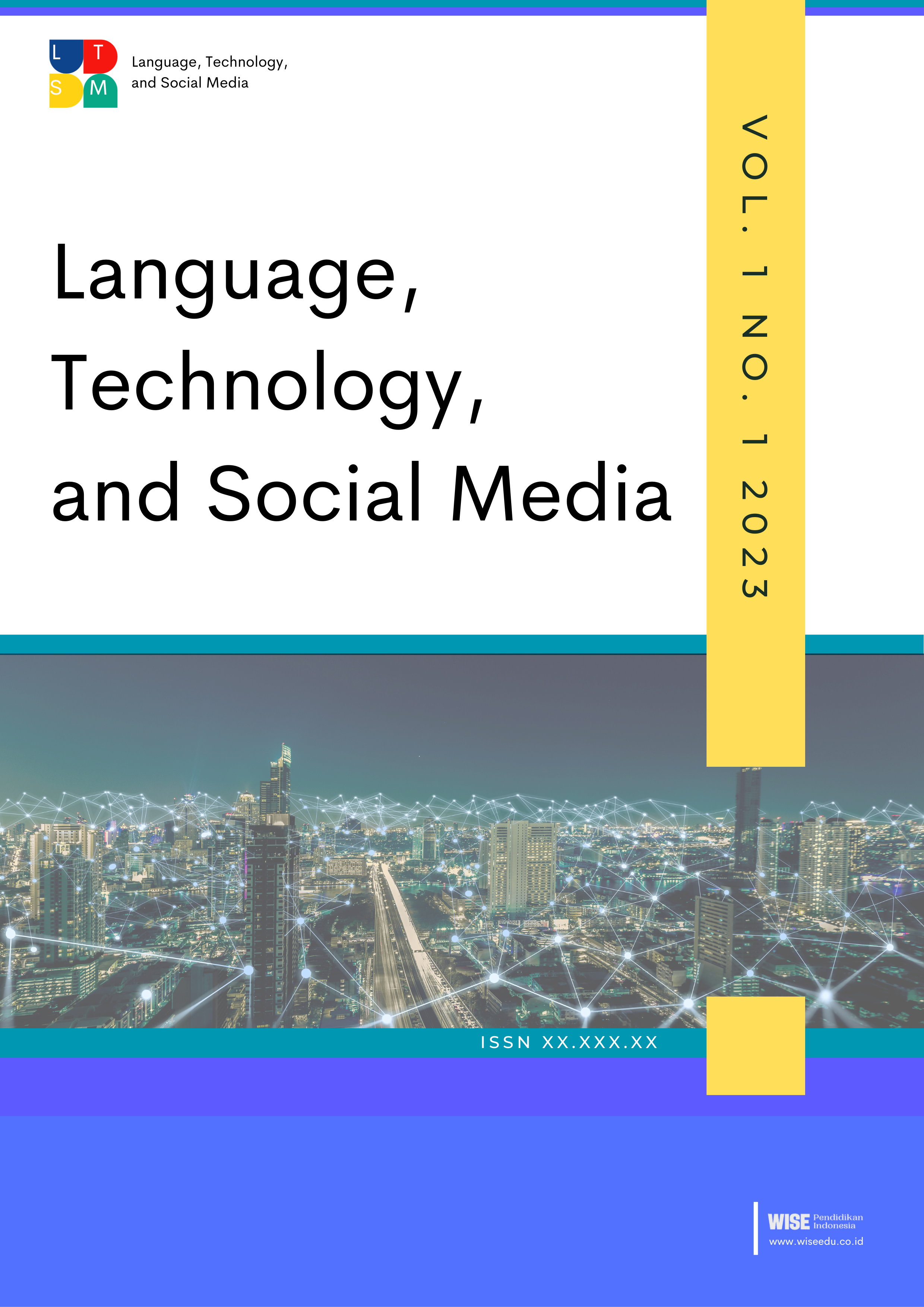Implementing the Humanistic Approach in 21st-Century Interactive Arabic Language Learning at Madrasah Ibtidaiyah
DOI:
https://doi.org/10.70211/ltsm.v1i2.27Keywords:
Humanistic Approach, 21st Century Learning, Arabic Language InstructionAbstract
The purpose of this study is to elucidate the paradigm of the humanistic approach in 21st-century interactive Arabic language instruction at Madrasah Ibtidaiyah. This research employs a library research methodology, sourcing data from literature, various websites, journals, dictionaries, encyclopedias, documents, and magazines. The findings demonstrate that the humanistic approach is instrumental in helping students comprehend Arabic by integrating contemporary digital learning developments. This approach focuses on nurturing students' cognitive, affective, and psychomotor skills through a supportive and engaging educational environment. The study highlights the necessity of this approach in overcoming the challenges students face in learning Arabic, ensuring a more enjoyable and less daunting learning experience. The humanistic approach serves as a strategic framework to facilitate effective Arabic language acquisition, aligned with the demands of 21st-century education.
References
A. Amrina, M. Rezi, A. Mudinillah, C. Geofani, and D. Hikmah, “Pemanfaatan Aplikasi Audacity Pada Pembelajaran Istimā’ Untuk Madrasah Ibtidaiyyah Negeri Satu Sungai Tarab,” Al Mi’yar J. Ilm. Pembelajaran Bhs. Arab dan Kebahasaaraban, vol. 5, no. 1, p. 117, 2022, doi: 10.35931/am.v5i1.729.
M. A. Alsubaie, “Impacts of Technology in Learning: Mobile Typing Applications for Writing and Accomplishing Academic Tasks among Arabic-Speaking Undergraduate Students,” Educ. Sci., vol. 12, no. 12, p. 891, Dec. 2022, doi: 10.3390/educsci12120891.
M. Khaira, “The Effectiveness of Crossword Puzzle in Improving Mufradat Skills,” Tanwir Arab. Arab. As Foreign Lang. J., vol. 1, no. 2, pp. 55–62, Dec. 2021, doi: 10.31869/aflj.v1i2.2864.
M. Syaifullah and N. Izzah, “Kajian Teoritis Pengembangan Bahan Ajar Bahasa Arab,” Arab. J. Bhs. Arab, vol. 3, no. 1, p. 127, 2019, doi: 10.29240/jba.v3i1.764.
M. Ritonga, S. R. Febriani, M. Kustati, E. Khaef, A. W. Ritonga, and R. Yasmar, “Duolingo: An Arabic Speaking Skills’ Learning Platform for Andragogy Education,” Educ. Res. Int., vol. 2022, pp. 1–9, Feb. 2022, doi: 10.1155/2022/7090752.
M. Sahrim, N. F. A. Mohamad Soad, and L. H. Asbulah, “Augmented Reality Technology in Learning Arabic Vocabulary from the Perception of University Students,” Int. J. Interact. Mob. Technol., vol. 17, no. 21, pp. 79–96, Nov. 2023, doi: 10.3991/ijim.v17i21.41277.
S. Mulyani and A. Sholeh, “Paradigma Pembelajaran Bahasa Arab (Analisis Kontrastif Metode Pembelajaran Konvensional dan Kontemporer),” Tak. J. Pendidikan, Sains, dan Hum., vol. 2, no. 1, pp. 63–75, Apr. 2023, doi: 10.56113/takuana.v2i1.71.
U. Hijriyah, M. Aridan, A. N. Mizan, A. Dealintang, and L. Yuniarti, “Development of Digital Comic Media for Learning Qira’ah for Fifth Grade Students of Madrasah Ibtidaiyah,” Arab. J. Bhs. Arab, vol. 6, no. 2, p. 693, Nov. 2022, doi: 10.29240/jba.v6i2.4361.
S. Caserta, G. Tomaiuolo, and S. Guido, “Use of a smartphone-based Student Response System in large active-learning Chemical Engineering Thermodynamics classrooms,” Educ. Chem. Eng., vol. 36, pp. 46–52, Jul. 2021, doi: 10.1016/j.ece.2021.02.003.
A. de Albuquerque, R. Recuero, and M. Alves dos Santos Junior, “Online communication studies in Brazil: origins and state of the art,” Online Media Glob. Commun., vol. 2, no. 1, pp. 100–121, Mar. 2023, doi: 10.1515/omgc-2022-0068.
E. R. Wulan and F. Astuti, “Mathematical Literacy with Islamic Nuances Based on Prospective Mathematics Teachers’ Personality,” J. Didakt. Mat., vol. 9, no. 2, pp. 230–247, Oct. 2022, doi: 10.24815/jdm.v9i2.26975.
A. Maimun, “The conversion of Nahdlatul Ulama’s (NU) affiliated people to Majelis tafsir Al-Qur’an (MTA): A case study from traditional to puritan Islam,” J. Ilm. Islam Futur., vol. 21, no. 1, p. 101, 2021, doi: 10.22373/jiif.v0i0.5784.
W. O. Lusianai, M. D. Rachim, Muliati, and Astin, “Digital Literacy of Open Access Services to Support Online Learning During The Covid-19 Pandemic,” J. Pemberdaya. Masy. Madani, vol. 6, no. 2, pp. 325–350, Nov. 2022, doi: 10.21009/JPMM.006.2.09.
M. Huda, “Difficulties in Learning Arabic Vocabulary (Mufradat) Students of MTs NU Al Falah Jekulo Kudus,” Al Hikmah J. Educ., vol. 3, no. 2, pp. 291–304, Dec. 2022, doi: 10.54168/ahje.v3i2.147.
T. Ningsih and G. K. Jha, “Strengthening Student Competency in Making Social Science Learning Media, Social Science Development Courses,” J. Innov. Educ. Cult. Res., vol. 2, no. 1, pp. 1–6, Jun. 2021, doi: 10.46843/jiecr.v2i1.23.
M. Munirah, “Peranan Guru dalam Mengatasi Kesulitan Belajar Siswa,” TARBAWI J. Pendidik. Agama Islam, vol. 3, no. 02, pp. 111–127, 2018, doi: 10.26618/jtw.v3i02.1597.
V. Manipatruni and S. K. Nannapaneni, “The role of Ed puzzle in online English language teaching and learning-a revolution through gamification during COVID-19 pandemic.,” Int. J. Aquat. Sci., vol. 12, no. 2, pp. 1221–1226, 2021, [Online]. Available: http://www.journal-aquaticscience.com/article_132058_891efcf3d4341216401af5bf63074d34.pdf
A. S. Munna and M. A. Kalam, “Teaching and learning process to enhance teaching effectiveness: literature review,” Int. J. Humanit. Innov., vol. 4, no. 1, pp. 1–4, 2021, doi: 10.33750/ijhi.v4i1.102.
N. Leach, “Impactful Learning Environments: A Humanistic Approach to Fostering Adolescents’ Postindustrial Social Skills,” J. Humanist. Psychol., vol. 62, no. 3, pp. 377–396, May 2022, doi: 10.1177/0022167818779948.
Downloads
Published
How to Cite
Issue
Section
License
Copyright (c) 2024 Yuni Lestari, Yusuf Muhtarom yusuf, Maksudin Maksudin

This work is licensed under a Creative Commons Attribution 4.0 International License.
This article is an open access article distributed under the terms and conditions of the Creative Commons Attribution-ShareAlike (CC BY 4.0) license (https://creativecommons.org/licenses/by/4.0/).
.gif)









